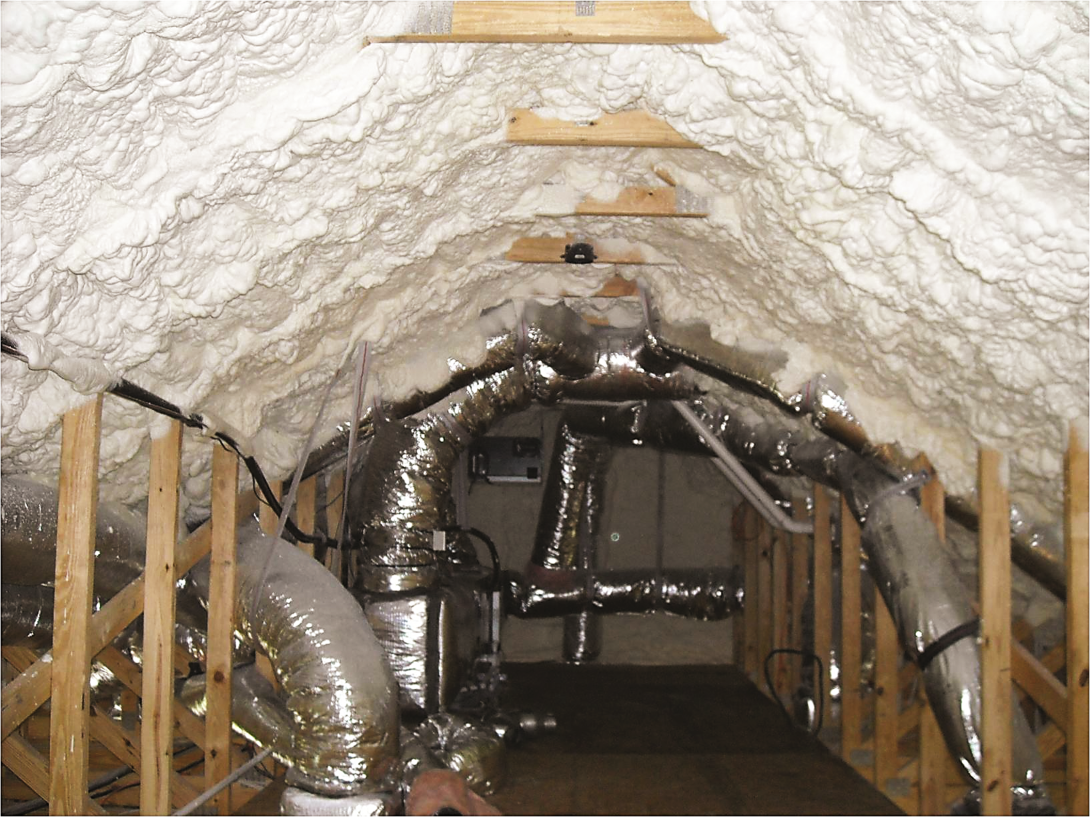
Insulation
High-R Attics
Building codes set minimum requirements for insulation R-values in ceilings and attics. High-R attics meet or exceed insulation requirements for walls, and floors. Because they meet or exceed the requirements of these codes, including the 2015 International Energy Conservation Code (IECC), high-R attics are a key strategy in high-performance and zero-energy- ready homes.
Initial construction offers the best opportunity for bolstering the thermal envelope of a home. High-R attics provide extra added thermal protection that meets or exceeds the requirements of the IECC, which is the U.S. model energy code.
When installed properly, high-R attics contribute to spaces that require very little heating and cooling and which are evenly comfortable and quiet.
There are two levels of high-R attic insulation. High-efficiency insulation meets the 2015 International Energy Conservation Code. Ultra-efficient insulation is 25% more efficient than this national code. These high levels of insulation are often achieved with a combination of open- and closed-cell spray foam; rigid foam and blown-in or batt insulation; or spray foam and blown-in or batt insulation.
To be most effective, high-efficiency and ultra-efficient insulation must be installed correctly. Professional installation ensures there are no gaps, voids, compression, or misalignment with air barriers; complete air barriers; and minimal thermal bridging.